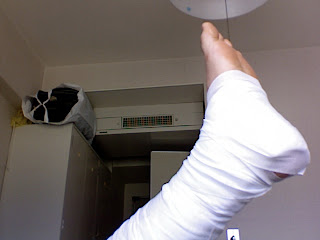[rational] RUP
hi there,
here is what i got after digging several books and documentation about rational products. dunno if this is valid or irrational, just keep on reading...
Rational Unified Process
THE PHASES:
1. Inception
- milestone: lifecycle objectives
- output:
-> a vision document: a general vision of the core project requirements key features and main constraint
-> an initial use-case model (10%-20% complete)
-> an initial project glossary
-> an initial business case which includes business context, success criteria, and financial forecase
-> an initial risk assessment
-> a project plan, showing phases and iterations
-> one or several prototypes
2. Elaboration
- milestone: lifecycle architecture
- output:
-> a use-case model (80% complete)
-> a software architecture description
-> an executable architectural prototype
-> a development plan for the overall project, included the coarse-grained project plan
3. Construction
- milestone: initial operational capability
- output:
-> the software product integrated on the adequate platform
-> the user manual
-> a description of the current release
4. Transition
- milestone: product release
- output:
-> beta testing
-> parallel operation with existing system
-> conversion of operational database
-> training of users and maintainers
-> roll out product to marketing, distribution and sales team
MODELING ELEMENTS:
1. Workers, the "who"
more to a role rather than an individual. responsibilities assigned includes both to perform a certain set of activities as well as owner of a set of artifacts.
2. Activities, the "how"
activity usually expressed in terms of creating/updating some artifacts, such as a model, a class, or a plan. granularity generally a few hours to a few days.
3. artifacts, the "what"
an artifact is a piece of info that is produced, modified, or used by a process. artifacts are the tangible products of the project. artifact is used as input by workers to perform an activity and is the result or output of such activities. artifacts in form of: a model (use-case, design), a model element (element within model such as class, a use-case or a subsystem), a document (business case, software architecture documents), source code, executables.
4. workflow, the "when"
workflow is a sequence of activitiesthat produce some valuable result and to show interaction between workers. workflow in form of: sequence diagrams, collaboration diagram, activity diagram.
THE 9 PROCESS WORKFLOW:
1. the 6 core "engineering" workflow
- business modeling workflow
- requirements workflow
- analysis workflow
- implementation workflow
- test workflow
- deployment workflow
2. the 3 core "supporting" workflow
- project management workflow
- configuration & change management workflow
- environment workflow


0 Comments:
Post a Comment
<< Home